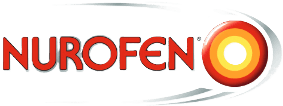Names are changing.
It’s becoming less important to create names that describe what a product or business does. For example, when Midland Bank launched a direct bank in 1989 they called it ‘First Direct’. Roll forward to 2013 and BNP Paribas launch a digital direct bank called ‘Hello Bank’. The need to include an explanatory ‘direct’ or ‘digital’ has disappeared as consumer understanding of the concept has grown.
Names these days often tell us little about the company structure or location. Terms such as ‘Group’ and ‘Company’ as well as owner, town and country names are disappearing. This reduced need for explanation and locality has allowed brand owners to concentrate on making names unique , short and memorable. Zoopla, Spotify, Skype and Uber are now commonly used as verbs.
But, while new words can stand out easily among more traditional names, globalisation remains a considerable challenge. Brand names now need to work across the world, taking into account a range of linguistic and cultural factors, such as local meaning and pronunciation.
Just think about brands such as Seat, Ikea and VW. Seat in English, of course, is something that you sit on, rather than in. Volkswagen may be conveniently shortened to VW, but still has varying pronunciation across languages from ‘fau-vey’ in German, to ‘vey doobla vey’ in French and ‘vee doppe-ah voo’ in Italian.
Ikea on the other hand has managed to educate the world to say ‘ee-kay-ah’ fairly successfully. There is a school of thought that believes a name that is difficult to pronounce creates a talking point and is therefore a good thing. In Ikea’s case it was the basis of an entire advertising strategy!
After devising a list of names that work in multiple contexts, the next challenge is settling on the right one. The naming process is academic and linear, existing in a bubble, separated from real life exposure and meaningful context. Long lists of names are whittled down by excluding potential trade mark clashes, available URLs and negative associations.
Market research goes some way towards rectifying this by gathering the opinions of the target market. However, this exercise is still in many ways sheltered, being presented often without the support of a creative platform and without the benefit of the associated brand experience. It is the combination of these factors that help a name to become successful.
Ultimately, organisations cannot know how a name will perform until it is in the real world, representing products or services. It’s meaningless until real life customers have had an opportunity to build an association, good or bad. This ultimately makes naming a risky business. It’s easier for start-ups though. There is no legacy to worry about, only the future. A failed name can disappear overnight, to reappear the next day as a much stronger incarnation.
Regardless of how a name will be received by the market, in this globalised, internet driven world, brand owners are well advised to secure trade mark protection as quickly as possible to avoid issues further down the line.
But, while it’s advisable for an organisation to seek protection in multiple jurisdictions where it operates, there are numerous issues with protecting on a global scale, such as differing laws, processes and a myriad of organisations and individuals who may have grounds for objection.
